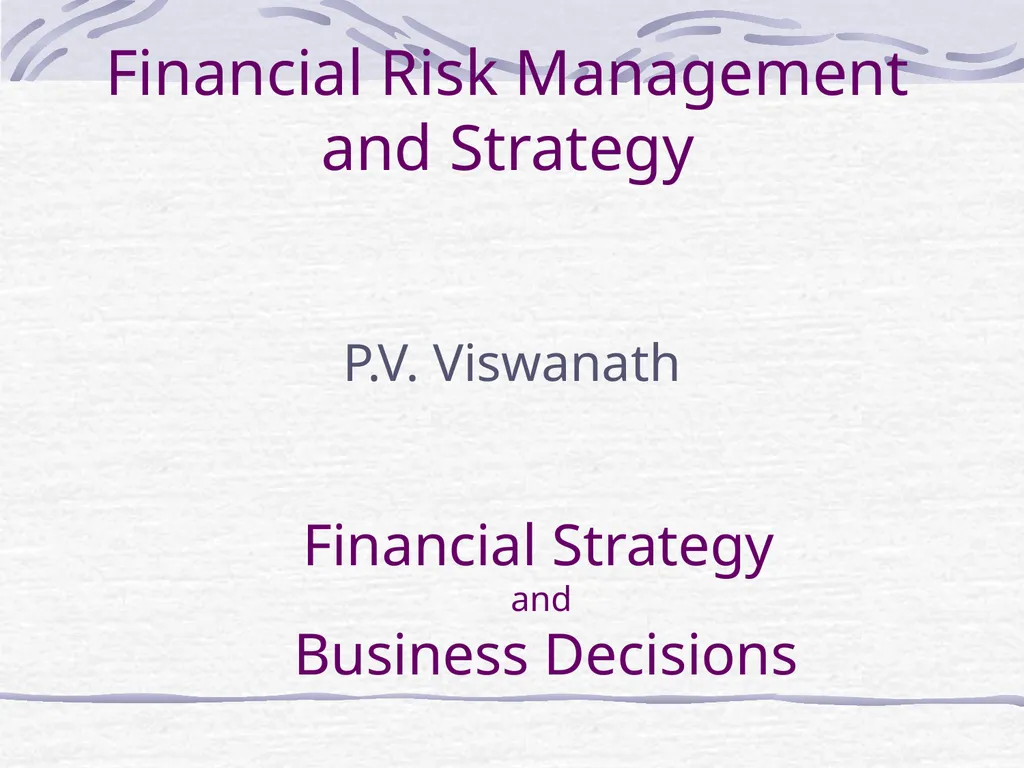
Financial Risk Management and Strategy P.V.
Author: faustina-dinatale | Published: 2025-05-29
Description: Financial Risk Management and Strategy P.V. Viswanath Financial Strategy and Business Decisions Outline Why firms manage risk: A broad perspective Sources of funds and firm risk management Bankruptcy costs and firm risk management Internal
Download Presentation
Download the PPT/PDF: Download
Transcript:
Loading transcript…